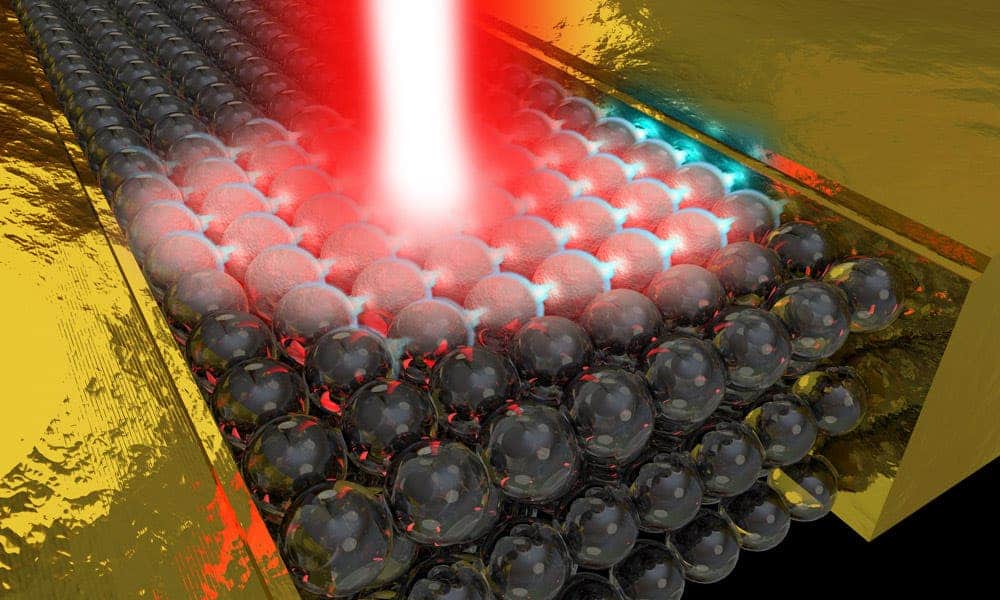
In a remarkable story where theory led to an experiment that no one really understood at the beginning, scientists have demonstrated the fastest way to generate electricity. The experiment involved firing an ultra-fast laser pulse onto a glass thread a thousand times thinner than a human hair, which worked as a wire between two metal junctions.
When the laser pulse — that lasts only a millionth of a billionth of a second — hit the glass, it completely changed its properties, coaxing the material to behave like a metal for a fraction of time.
The laser generates a burst of electricity across this very tiny electrical circuit — it does so faster than any other method for producing electricity, and in the absence of an applied voltage to boot.
Simply by varying the shape of the laser (its phase), Ignacio Franco, assistant professor of chemistry and physics at the University of Rochester, was able to control the direction and magnitude of the current.
“This marks a new frontier in the control of electrons using lasers,” the researcher said in a statement.
Previously, in 2007, Franco published a paper theorizing that ultrafast electrical currents could be generated in molecular wires exposed to femtosecond laser pulses, creating a nanojunction. He hypothesized that the electrical current would be generated due to a phenomenon called the Stark effect, in which the energy levels of matter are shifted by the external electric field of the laser.
In 2013, another research group at the Max Planck Institute of Quantum Optics was able to generate ultrafast currents by exposing glass, connected to two gold electrodes, to laser pulses. At the time, no one really knew how to explain the exact mechanisms involved, until Franco entered the picture.
Along with colleagues, Franco embarked on a four-year-long simulation that involved millions of computing hours on the Blue Hive supercomputing cluster.
“We were able to recover the main experimental observations using state-of-the-art computational methods, and develop a very simple picture of the mechanism behind the experimental observations,” he said.
Franco claims the new method can generate currents far faster than ever before.
“This is a wonderful example of how differently matter can behave when driven far from equilibrium. The lasers shake the nanojunction so hard that it completely changes its properties. This implies that we can use light to tune the behavior of matter,” he said.
“Theory led to an experiment that nobody really understood, resulting in better theories that are now leading to better experiments” he says. “This is an area in which we still have a lot of things to understand,” he added.
The findings appeared in the journal Nature Communications.






